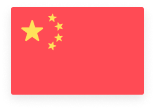Donald Trump’s return to the White House has reignited concerns over US trade policy and its impact on global markets. His administration has already proposed a 10% tariff on all Chinese imports, expected to take effect on February 1, 2025, alongside future potential 60% tariffs on select goods. These measures could significantly reshape economic dynamics in Asia, particularly for export-driven economies. Investors are also closely watching how Asian credit markets will respond—will the region’s resilience hold, or will renewed trade tensions disrupt growth and financing conditions?
Uncertainty over US trade policies may dampen sentiment and reduce capital expenditures in Asia. To counter Trump’s potential isolationist stance, Asian nations might need to bolster intra-regional trade and forge new partnerships, PineBridge Investments suggests.
In an analysis, the asset manager identified the Asian countries that are winners and losers of Trump’s trade policies. It indicates that only a limited number of issuers in Asia’s credit markets will be directly affected by the expected tariffs. “We estimate that only 2.5% of issuers in the JP Morgan Asia Credit (JACI) Index derive over 10% of their revenue from the US and may feel a direct impact. These issuers are mainly in the industrial, consumer, and TMT (telecommunications, media, and technology) sectors in China, Taiwan, Korea, and India,” says Andy Suen, Co-Head of Asia Fixed Income at Pinebridge Investments.
Suen explains that even among issuers exposed to US tariffs, many have measures in place to mitigate the impact. Korean automakers, for example, produce heavily in the US, limiting exposure. Taiwanese tech firms are expanding production in the US and Europe. A Chinese battery maker collaborates with US original equipment manufacturers through a licensing and royalty model. Meanwhile, companies with strong technological leadership remain resilient due to high demand, and some issuers in Southeast Asia and India stand to gain from supply chain shifts, PineBridge suggests.
“We expect Asia credit issuers to stay resilient on the whole, with strong balance sheets and improving access to cheaper funding both locally and internationally,” Suen concludes. “Notably, Asia investment grade (IG) corporate leverage has remained steady and is lower than that in developed markets, while Asia high yield (HY) default rates continue to trend down.”


 Australia
Australia China
China India
India Indonesia
Indonesia Japan
Japan Malaysia
Malaysia Philippines
Philippines Singapore
Singapore South Korea
South Korea Taiwan
Taiwan Thailand
Thailand Vietnam
Vietnam







